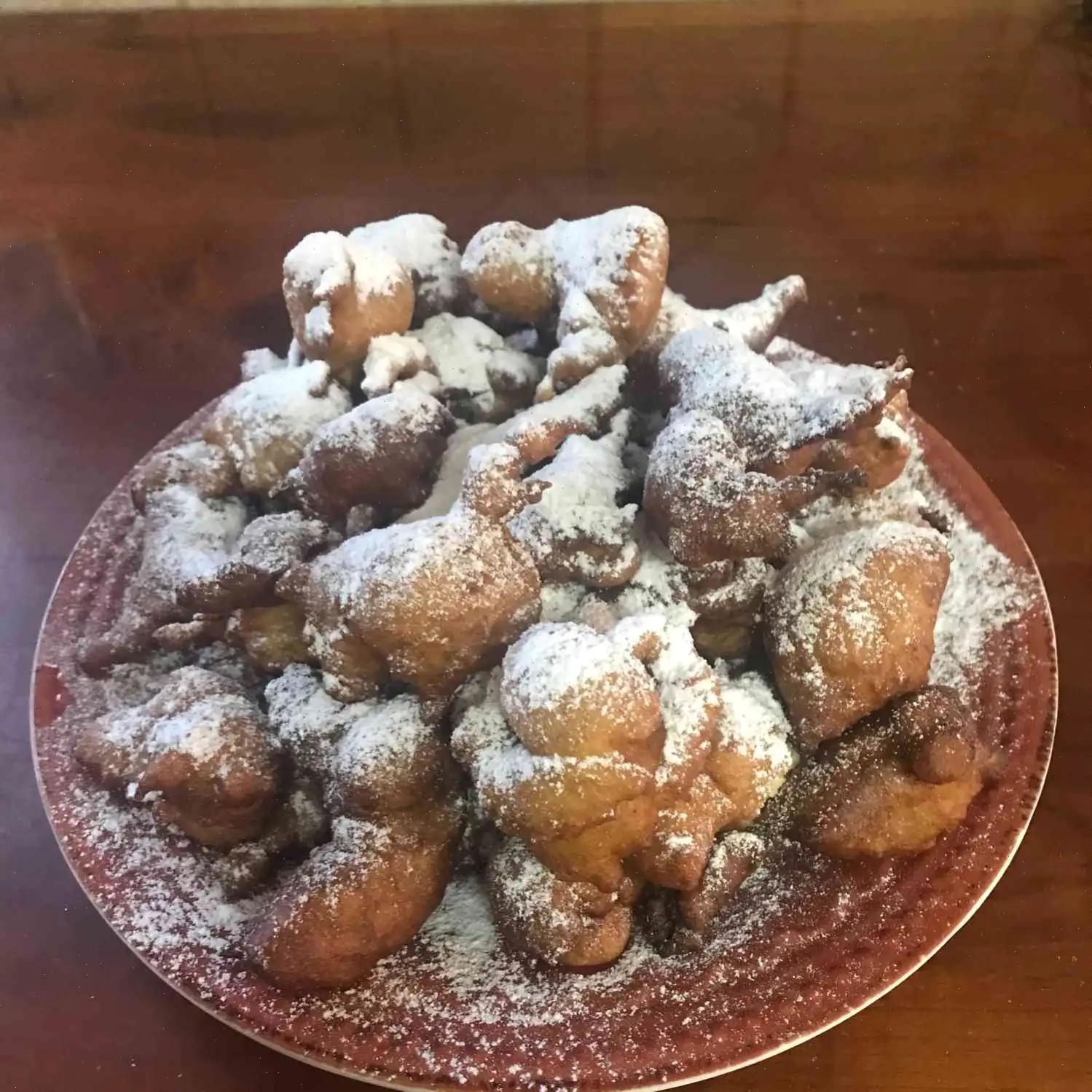
3 Ingredient Ube Ice Cream Recipe
Ingredients
This recipe was developed at its original yield. Ingredient amounts are automatically adjusted, but cooking times and steps remain unchanged. Note that not all recipes scale perfectly.
- 2 cups heavy cream
- 1 (10 ounce) can ube sweetened condensed milk
- 4 teaspoons ube flavoring or extract
Directions
- Pour heavy cream into a chilled bowl.
- Using a hand mixer, whip the cream until soft peaks form, approximately 3 to 4 minutes.
- Add the ube sweetened condensed milk and continue whipping until stiff peaks form.
- Pour in the ube flavoring and mix until just combined.
- Transfer the mixture into a freezer-safe with a lid.
- Freeze overnight to let it set.
- Before serving, allow the dessert to sit on the counter for a few minutes to soften slightly.
Nutrition Facts
Per serving (6 servings total)
| Nutrition | Amount per Serving | % Daily Value* |
|---|---|---|
| Calories | 482 | - |
| Total Fat | 34g | 44% |
| Saturated Fat | 22g | 109% |
| Cholesterol | 111mg | 37% |
| Sodium | 103mg | 4% |
| Total Carbohydrate | 37g | 14% |
| Dietary Fiber | 0g | 0% |
| Total Sugars | 37g | - |
| Protein | 7g | 15% |
| Vitamin C | 2mg | 2% |
| Calcium | 233mg | 18% |
| Iron | 0mg | 1% |
| Potassium | 316mg | 7% |
*Percent Daily Values are based on a 2,000 calorie diet. Your daily values may be higher or lower depending on your calorie needs.

This simple yet delicious 3 Ingredient Ube Ice Cream is a creamy, vibrant, and exotic dessert that will leave you craving more. Made with only three key ingredients, it's perfect for anyone looking to try something new in the world of frozen treats. Below, well explore the history, regional variations, and interesting facts about this Filipino-inspired dessert.
History and Origins
The ube is a purple yam native to the Philippines and has been used in Filipino cuisine for centuries. It gained popularity due to its rich, nutty flavor and striking purple color, which makes it visually appealing and unique. The Filipino word "ube" is derived from the Tagalog language, and it is often associated with traditional sweets and desserts like halo-halo, ube halaya (sweet jam), and, of course, ube ice cream. Ube ice cream became a well-loved treat in the Philippines and eventually found its way into international markets, particularly in Filipino communities worldwide.
Regional Variations
While ube ice cream is a beloved dessert throughout the Philippines, its preparation can vary slightly by region. In some areas, ube is prepared with a combination of coconut milk, sugar, and condensed milk to create a smoother, creamier texture. However, the version popularized in Filipino restaurants and markets worldwide is typically made with ube flavoring or extract mixed into a simple cream base. Despite these minor variations, the central component remains the same: the sweet and earthy taste of ube. The 3 Ingredient Ube Ice Cream recipe, using ube sweetened condensed milk and heavy cream, is a shortcut that still delivers the distinct ube experience without the need for multiple ingredients or a long preparation time.
How It Differs From Similar Desserts
Ube ice cream stands out from other varieties of ice cream due to its unique flavor profile. Unlike vanilla or chocolate, which are the most common flavors in Western ice creams, ube offers a nutty, slightly sweet, and earthy taste. The striking purple hue is another characteristic that sets it apart visually from traditional ice cream flavors. While other purple-colored ice creams may use artificial coloring or different fruits, ube ice cream uses the root vegetable itself, providing an authentic taste. It is often compared to sweet potato ice cream, but ube is generally sweeter, with a more complex flavor profile.
Where Ube Ice Cream Is Commonly Served
Ube ice cream is a popular treat in Filipino communities and is often served at family gatherings, fiestas, and special occasions. It can be found in most Filipino restaurants, both in the Philippines and abroad, especially in areas with large Filipino populations, like California, Hawaii, and New York. Aside from being enjoyed on its own, ube ice cream is also commonly used as a topping for other Filipino desserts, like halo-halo (a shaved ice dessert) or served alongside traditional pastries like pan de sal or ube pandesal (Filipino bread rolls). Its versatility and unique taste make it a favorite in both traditional and modern Filipino desserts.
Fun Facts About Ube
- Ube is rich in antioxidants, which contribute to its vibrant purple color and health benefits.
- Though ube ice cream has become popular worldwide, it was originally a treat exclusively enjoyed in the Philippines and surrounding Southeast Asian regions.
- The sweetened condensed milk used in this recipe gives the ice cream a smooth and rich texture, making it one of the easiest and creamiest homemade ice creams to prepare.
- Ube is often confused with taro, but they are two different root vegetables, with ube having a sweeter flavor and brighter color compared to the more neutral-tasting taro.
- Aside from desserts, ube is also used in savory dishes in Filipino cuisine, showcasing its versatility as an ingredient.
Whether you're a long-time fan of Filipino desserts or a newcomer, this 3 Ingredient Ube Ice Cream is a perfect introduction to the world of ube. Its simplicity, combined with the delightful flavor and texture, makes it a treat worth sharing with friends and family.








